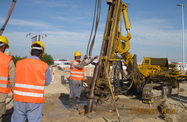The real estate sales market in Dubai has outperformed the rental market in the last year, sparking a squeeze in yields and prompting concerns that the fundamentals of the market are becoming skewed.
Soaring house prices in Dubai led the global rankings for four quarters according to real estate agency Knight Frank, and in some areas, prices were back to near pre-crisis levels, prompting the UAE Central Bank to issue a warning in June of “growing imbalances” and “an overheating real estate market”. A month later, the IMF said that action may be necessary if real estate prices continue to rise rapidly.
All eyes on yields
The trend of low yields has been particularly evident in the apartment segment, where sales prices increased 25% year-on-year (y-o-y) in the third quarter. The rental market, in comparison, rose 16% during the same period, according to commercial real estate services company CBRE.
A report compiled by Unitas Consultancy and the real estate data analytics firm Reidin found that residential rents across the emirate contracted by 1% in the third quarter over the previous quarter, with net yields ranging from 3.5% to 7.6%. In June rental yields in Dubai stood at 70 basis points below historical averages according to the report released in late July 2014.
Christopher Seymour, head of property UAE at consultancy EC Harris, points to the investment market, in terms of buy-to-let properties, as a key barometer of confidence in a property market and an early warning sign of potential future trouble. “In all sectors, if the investment market dies away, it shows there’s no growth. And the yield compression in the Dubai residential market is really telling us that story now,” he told OBG.
Supply versus demand
In spite of a growing consensus that Dubai’s residential property market is edging towards a peak, most experts do not believe the emirate is heading for a repeat of the last property crash. “Between 40,000 and 50,000 units were handed over each year in the 2007-08 period,” Matt Green, head of research at CBRE Middle East told OBG. “We’re certainly not there at the moment, with around 62,000 units scheduled for completion by the end of 2017.”
In November, ratings agency Standard & Poor’s said prices are likely to soften due to supply in the market. “Developers are likely to continue to feed the market with new supply − particularly the top-tier players, such as UAE-based Emaar Properties, which can attract off-plan buyers for their launches, meaning they sell properties before they’re built,” said S&P. “We thus expect supply additions to outpace demand over the next few years and believe prices are likely to stabilise or soften.”
Dubai’s reputation as a safe haven, at a time when much of the region remains weighed down by instability, has helped it to maintain strong investment inflows, but, simultaneously, has made it difficult to estimate levels of sustainable demand. Reidin and Unitas point out that the sales segment continues to be dominated by cash buyers, which accounted for 72% of transactions at the beginning of the year.
Unlike the last boom cycle, the injection of supply is more gradual in the both the residential and commercial segment. “Population and employment growth is enough to support 15,000 to 20,000 residential units each year and this is the current pipeline, so we don’t think there’s an oversupply problem,” Craig Plumb, head of research for the Middle East and North Africa at real estate services company Jones Lang LaSalle told OBG.
Reassuring investors
Measures introduced by the Real Estate Regulatory Agency since 2008 aimed at cooling speculation have proved largely effective. Stamp duty (a registration fee) has been raised from 2% to 4%, while new obligations imposed on developers looking to sell off-plan are now in force. An interactive investment map, brought in by the Dubai Land Department, is supporting the measures by providing greater clarity for investors.
Prices in Dubai’s luxury homes market fell 0.2% y-o-y in the third quarter, after rising 6.3% y-o-y in the second quarter. Knight Frank, which compiled the data, attributed the drop to a mortgage cap, which imposes even stricter borrowing criteria for those purchasing properties above $1.36m.
The off-plan market has already eased in recent years with broker estimates placing current sales at between 2000 and 3000 units per year. “The biggest issue is whether there will be any exogenous shocks and liquidity drying up, but at this stage I do not see this happening,” Rehan Akbar, analyst for EMEA corporate finance at Moody’s Investors Service Middle East told OBG.
Fundamental demand, analysts conclude, remains relatively strong. “There is continued investment demand so we don’t think there will be a major correction,” Plumb said. Caution, rather than pessimism, seems to sum up the current mood.

